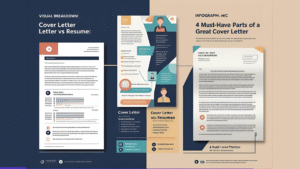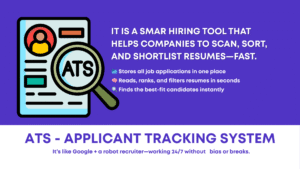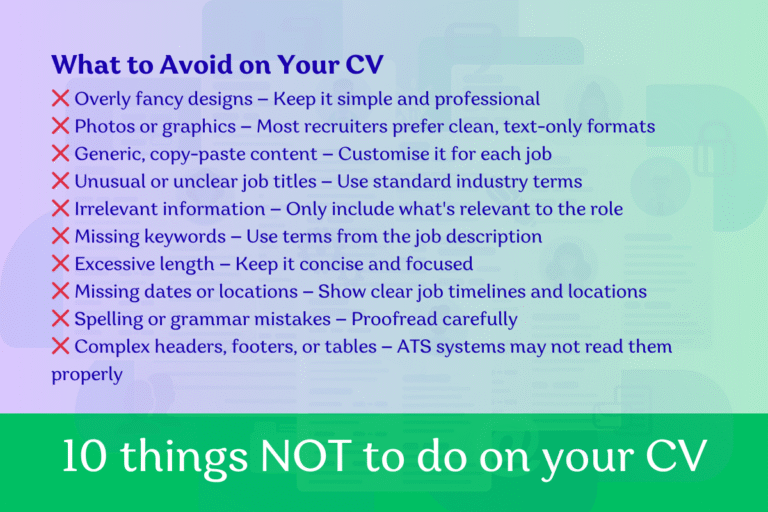Why Your Resume Is Not Getting Shortlisted – Top Resume Mistakes and Proven Fixes That Get Results -
For many years, I applied for job after job… but never got a response. Not even one shortlisting. I kept wondering: Why? What am I doing wrong? I made my resume with the help of so-called ‘experts’ and added everything I thought companies wanted—my skills, achievements, keywords, everything.
But still… nothing.
Today, I work as a Hiring Manager at JobRath. Now, I’m the one reviewing resumes. And finally, I understand what went wrong. Why Is not Your Resume Getting Shortlisted?
My resume had good information, but it didn’t look good. There were spelling mistakes, bad formatting, and it wasn’t easy to read. These small problems made a big difference—and I missed many chances.
This experience taught me something very important: It’s not only what you write on your resume, but how you present it that matters. If you’re feeling the same way, don’t worry—you’re not alone. I’ve been there too.
And now, I want to help you learn from my mistakes and do better.
Let me tell you why your resume is not getting shortlisted.
Before calling you for a job interview, recruiters often use an ATS, which stands for Applicant Tracking System.
Think of an ATS as an intelligent robot assistant that helps HR and hire managers quickly review many resumes. It checks if a candidate has the right skills, experience, education, and other essential details for the job.
The ATS looks for specific keywords and information in your resume. If your resume doesn’t include what the system is looking for, it might get rejected automatically and never reaches the recruiter, even if you’re the perfect person for the job.
This is usually the first step in the hiring process, and it’s a big reason so many good candidates never hear back.
So, what can you do?
- Make sure your resume is well-formatted and easy to read.
- Add the right keywords from the job description.
- Double-check for spelling or grammar mistakes.
If your resume isn’t built for ATS, it might never reach a real person. I know how frustrating that feels, but you can change it. I’ve been in your shoes. I’ve made the same mistakes. But now I’m here to help you avoid them—and finally get the attention your resume deserves.
You can learn more about ATS:
- What is ATS and how does it work?
- How can you beat the ATS?
- How can you increase your ATS score?
Common Reasons - Why Is Not Your Resume Getting Shortlisted?
Here’s what could be stopping your CV from getting noticed—and how you can fix it. Let me share the mistakes I made in my resume and how I corrected them—so you can avoid them, improve your ATS score, and increase your chances of getting shortlisted.
I Used the Same Resume for Every Job—That Was My Biggest Mistake
For a long time, I believed that one resume could fit all roles. I kept submitting the same version repeatedly—without tailoring it to the job. The outcome? No interview calls. No responses. It was frustrating.
Then, I enrolled in the PDP Global Hiring Manager Certification program, and everything changed. I finally understood where I was going wrong and learned how to create a resume that truly works.
What I Learned:
After completing the Hiring Manager Certification, I realized that every job is different, and each company looks for specific skills, keywords, and experiences that match their job description. If your resume doesn’t use the language the employer is looking for, it may never be noticed even if you’re qualified.
How to Fix It?
You need to customize your resume for each job you apply to. Start by reading the job description carefully, then updating your resume with the right keywords, relevant skills, and real achievements that match the role.
This small change can make a big difference—and help you get shortlisted.
💡 Tip for You:
- Don’t use the same resume for every job.
- Make it match the job you’re applying for.
- Show them you’re the right person for the role—and you’ll stand out.
I Didn’t Use the Right Keywords—And ATS Rejected My Resume:
When I first started applying for jobs, I had no idea how important keywords were. I wrote my resume in my own words, without really thinking about what the company was actually looking for. Because of that, my resume never made it past the ATS (Applicant Tracking System)—and I was never shortlisted.
The PDP Global Hiring Manager Certification program taught me that the ATS is like a robot that scans your resume for specific keywords—the exact words used in the job description. If your resume doesn’t include those words, the system assumes you’re not a match – even if you are.
How to Fix Them:
You must always include industry-specific terms and phrases directly from the job posting. You ensure your resume “speaks the same language” as the job description. This helps the ATS understand that you are a match, and it really works!
💡 Tip for You:
Always read the job description carefully and add those important words to your resume. This simple step can help you beat the ATS, improve your resume ranking, and get your profile shortlisted.
Poor Formatting or Design - But It Was Hard to Read:
At first, I thought using a stylish design and fancy fonts would make my resume stand out. I added colors, shapes, and different font styles to make it look impressive.
But instead of helping, it had the opposite effect. My resume became hard to read—and even more confusing for the Applicant Tracking System (ATS). That’s when I learned a key lesson: poor formatting and a cluttered layout can hurt your chances. If your resume is messy or difficult to scan, both recruiters and the ATS might skip it completely.
You can use a clean and professional format. Please keep it simple with easy-to-read fonts, clear headings, and bullet points to highlight your skills and achievements. This makes your resume easy to scan—and it looks professional too.
💡 Tip for You:
Don’t try to make your resume look “fancy.” Make it clear, simple, and organized so that both humans and ATS can read it easily. A clean resume gets noticed—and gets shortlisted.
I Listed My Job Responsibilities—But Not My Real Achievements:
I made this big resume mistake and did not even know it. When I first wrote my resume, I only mentioned what I did at work—my daily tasks and responsibilities. I thought that was enough. But I didn’t realize that hiring managers or the ATS (Applicant Tracking System) don’t just want to know what you did – they want to know how well you did it. I used to think listing my job duties or responsibilities was enough.
But guess what? No one cared. No one called. Not a single shortlist. I kept asking myself: Why am I not getting noticed? What am I doing wrong?
What did I learn?
The PDP Global Hiring Manager Certification program taught me that hiring managers and ATS (Applicant Tracking Systems) look for results—not just responsibilities. They want to see the impact you’ve made. That’s exactly where I was going wrong.
How to Fix It?
You have to stop listing boring duties and responsibilities in your resumes and start showing real achievements with numbers and proofs, like the following:
- “Increased website traffic by 70% in 3 months”
- “Generated $50,000+ in qualified leads”
- “Cut down report processing time by 30% “ These numbers grab attention and show that you make a difference.
💡 Tip for You:
Don’t just list what you did. Show how well you did it. Use numbers, percentages, or results wherever you can. This helps your resume stand out, boosts your ATS score, and shows recruiters that you’re a results-driven professional.
Resume Length Matters: Find the Right Length to Get Noticed:
One of job seekers’ most common resume mistakes is getting the length wrong. Either the resume is too short to show real value or too long to keep the recruiter’s attention—both can hurt your chances of getting shortlisted.
When I first started applying for jobs, I didn’t know how long my resume should be. But today, I know that recruiters spend only a few seconds reviewing each resume. That means your resume must be clear, focused, and the correct length based on your experience level.
📄 Resume Length Guidelines:
- 1 Page – Recommended for freshers, students, or anyone with less than 2 years of experience.
- 👉 Focus on education, internships, skills, and early achievements.
- 1–2 Pages – Ideal for professionals with 2 to 10 years of experience.
- 👉 This length gives enough space to showcase your relevant work, skills, and accomplishments.
- 2–3 Pages – Suitable for those in senior roles or with more than 10 years of experience.
- 👉 Use this space to highlight leadership roles, major projects, impact, and milestones.
Key Note:
Resumes over three pages are only recommended in special cases, such as academic, research, or federal jobs.
💡 Quick Resume Tips:
- Focus on quality, not quantity
- Use bullet points instead of long paragraphs
- Highlight achievements using numbers and results
- Use clear headings and easy-to-read fonts
Irrelevant or Outdated Information Can Hurt Your Resume:
In my early days, I thought listing everything I’d ever learned or done would make my resume stand out. So, I included every course, every tool, and even outdated technologies like MS-DOS. I added hobbies like “drawing cartoons,” thinking it would show personality.
But here’s the truth I’ve learned after 10 years in the industry:
More isn’t better. Relevance is everything.
Including outdated skills and irrelevant hobbies doesn’t make your resume stronger—it weakens your chances. It makes your profile look unfocused, old-fashioned, and out of touch with what employers really want.
What Recruiters Actually Look For:
- Up-to-date, job-relevant skills
- Recent and related experience
- Clear proof of your impact and results
Recruiters spend only 6 to 8 seconds scanning a resume. If yours is cluttered with outdated info, they won’t stick around—they’ll move on to the next candidate.
💡Pro Tips from a Resume Expert:
- Your resume isn’t your life story—it’s your highlight reel.
- Keep your resume focused and fresh
- Remove old tools or technologies that are no longer used in industry
- Only include hobbies if they’re relevant or add value to the role you’re applying for
Every word on your resume should serve a purpose. If it doesn’t help you get the job—it doesn’t belong there.
No Clear Career Objective or Summary:
When I started, I skipped writing a career objective or summary and believed that jumping straight into work history would save space and show action. Whenever I did, it was filled with generic buzzwords like “hardworking team player looking for growth.”
But here’s what I’ve learned after decades of building resumes that get interviews: If your resume doesn’t clearly tell the reader who you are and what you bring to the table in the first few lines, you’ve already lost their attention.
How to Fix It?
Your career summary is the top part of your resume and your first impression. Think of it like a movie trailer—it needs to show your strengths, experience, and value quickly. A clear, strong, professional summary tells the recruiter:
- Who you are
- What do you bring to the table
- Why you’re the right fit
And if you don’t say it clearly—someone else will.
Example of a Strong Summary:
I’m Mohd Tauheed, a results-driven Content Manager with 10+ years of experience crafting healthcare SOPs and academic digital marketing content. I specialize in delivering clear, impactful communication across education, health, IT, and interior sectors. I lead end-to-end content strategies, streamline team workflows, and ensure high-quality output that drives engagement, conversions, and brand credibility. Let’s turn ideas into results.
💡 Tip From Expert:
Keep your summary short, specifically, and tailored to the job you’re applying for. It should immediately answer the recruiter’s key question: “Why should we hire you?”
Grammatical Errors or Typos Can Ruin a Great Resume:
Sometimes, everything on a resume seems perfect—skills, experience, layout. But one small spelling mistake, bad grammar, awkward wording, or even one forgotten comma – and it goes straight to the rejection pile.
Sounds harsh? But it’s the truth. Typos and grammar mistakes may feel small, but to hiring managers, they show a lack of attention to detail. And in today’s job market, first impressions matter—especially when a recruiter is reading hundreds of resumes a day.
Even one tiny error can make a resume look unprofessional, rushed, or careless.
How to Fix It?
- Always proofread the resume before sending it.
- Use free tools like Grammarly or Hemingway Editor to catch hidden mistakes.
- Ask a friend, mentor, or colleague to review it with fresh eyes.
Even better, take a break and come back to it later—it’s easier to spot errors after a little distance.
💡 Pro Tip From Expert:
Think of a resume like a billboard. It has one job—to grab attention and build trust in seconds. So, before hitting “Send”—slow down, double-check, and polish.
Grammatical Errors or Typos Can Ruin a Great Resume:
When I first created my resume, I focused on listing my responsibilities, and my resume was filled with soft or passive phrases like “responsible for,” “helped with,” or “worked on.” It sounded okay—but it didn’t show what I actually did or achieved.
I didn’t realize that weak language was making my experience look less impactful, even when I had done excellent work.
How I Fixed It?
Recruiters don’t just want to know what was done. They want to know how it was done—and the difference it made. So, I started replacing weak phrases with strong, clear action words like:
- Led
- Improved
- Managed
- Developed
- Achieved
- Designed
- Solved
- Created
- Delivered
For example:
“Worked on a team project for marketing“
“Led a marketing project that boosted brand awareness by 40%.“
“Helped with customer service“
“Resolved 100+ customer queries weekly, improving satisfaction scores by 25%.“
These words helped me show tangible results and made my contributions stand out. Suddenly, my resume felt confident and professional—and it got noticed.
💡 Tips From Expert:
- Start every bullet point on your resume with a strong action verb.
- It adds confidence, energy, and impact instantly.
Wrong File Format or Unprofessional File Name – Losing Job Opportunities:
It sounds like a small thing, but it made a big difference. I spent hours working on my resume—writing it, formatting it, and making sure every detail was perfect. But still – no interview calls.
Then, one day, someone from HR gave me honest feedback. The issue was not inside my resume—it was the file itself. I used to send my resume in formats like .doc, .png, ppt, jpeg, or even with random file names like:
1. resume_final_v3.doc
2. resume123.png
3. Tauheed-NewResume.docx
It actually made a bad first impression. Some recruiters could not even open the file. Others saw the file name and assumed it was not serious or professional.
Here’s what I learned from HR feedback: when hiring managers download resumes, they save them in folders. Imagine 50 resumes, all named “resume.doc”—it’s hard to find yours. A clear and professional file name helps your resume stand out and makes it easy for recruiters to find and remember you.
How I Fixed It?
You have to save and send your resume to HR in PDF format with a professional name so it looks the same on every device and can’t be edited by mistake. Your Resume file should be like this:
👉 Mohd_Tauheed_Resume.pdf
It’s a small detail, but it shows professionalism and makes it easy for recruiters to find and remember.
💡 Tips for You:
- Always save your resume as a PDF—it’s clean, safe, and professional.
- Use a file name like: YourName_Resume.pdf
- Want to go a step further? Add the job title or year, too.
Bonus Tips to Make Your Resume Stronger and Stand Out:
The PDP Global Hiring Manager Certification Program taught me practical strategies to make my resume stronger, stand out from the competition, and leave a lasting impression on recruiters.
1. Add Your LinkedIn Profile (and Portfolio If You Have One):
You should include a clickable link to your LinkedIn profile, your portfolio, or your personal website. After reading your resume, recruiters will check your LinkedIn profile and portfolio. It gives recruiters a fuller picture of your professional brand.
If you are in a creative or digital field, you have to add your online portfolio, website, or GitHub profile (for tech roles). It’s a chance to show your work, not just talk about it.
2. Keep Your Contact Info Updated:
One time, I forgot to update my phone number. Guess what? A recruiter tried to call—and could not reach me—i missed the opportunity.
So always double-check:
- Is your phone number correct?
- Is your email professional (like yourname@email.com)?
- Is your location/city accurate (if required)?
These details seem small but are super important for getting interview calls.
3. Align Everything: Resume, Cover Letter, and Online Profiles:
Think of your resume, cover letter, and LinkedIn as pieces of a puzzle. They should tell the same story with no contradictions.
If your resume says, “Digital Marketing Specialist” but your LinkedIn says, “Freelance Designer,” it can confuse the recruiter.
- Make sure your job titles, skills, and experience match
- Use similar keywords and tones
- Show a clear, professional brand across all platforms
Learn More About the Cover Letter and Portfolio:
- What is a Cover Letter?
- How to Develop and Design a Cover Letter
- What is a Portfolio?
- How to Develop and Design a Portfolio
Final Thought:
These bonus tips might take only a few minutes—but they show you’re detail-oriented, organized, and ready to work. Small adjustments can go a long way in helping you look polished, professional, and ready to be hired.
Still wondering, why is not your resume getting shortlisted? It might be due to minor gaps you’re overlooking—formatting, keyword usage, or missing critical information. But don’t worry—we’re here to help.
💡 Want a free resume checklist? I can help with that too!
Stay Ahead in Your Career with JobRath!
If you’re looking to stay updated on the latest industry trends and discover job opportunities that match your skills, we’ve got you covered.
Register now to receive personalized job alerts:
https://jobrath.com/registration-form
Subscribe to our YouTube channel for career tips, job updates, and interview guidance:
https://www.youtube.com/@JobsRath
Follow us on social media to stay connected and informed:
- Facebook: https://www.facebook.com/jobrath
- Instagram: https://www.instagram.com/jobsrath
- LinkedIn: https://www.linkedin.com/company/jobrath
About Author
Mohd Tauheed
I am a seasoned content and advertising professional with 8+ years of proven experience in content creation, digital marketing, and SOP writing. My background spans both healthcare and consumer domains, where I have developed impactful promotional content, SEO-optimized articles, ad copy, and campaign strategies across print, digital, and social media platforms. I bring a strong command over English and Hindi writing, hands-on experience with Facebook Ads, Google Ads, and meta analytics tools, and a record of managing content for diverse industries including healthcare, education, IT, and interiors.
Explore More Recent Posts

What Is US Healthcare Training – And Why It’s the #1 Career Game-Changer for Indian Jobseekers in 2025?
Are you stuck in a low-paying BPO job—or unsure where your degree is taking you? U.S. Healthcare Training empowers Indian graduates to launch high-paying international careers—right from India. In just 3 months, learn Medical Billing, AR Calling, and Denial Management. No medical degree required. Get job-ready for top healthcare BPO roles in Noida, Pune, and beyond.
Start your breakthrough today—your career upgrade begins here.

What Is a Cover Letter? 7 Reasons Why It Matters More Than You Realize (And How to Write One That Actually Works)
Most job seekers skip it. Big mistake! A cover letter isn’t just “extra paperwork”—it’s your secret weapon to stand out. Your résumé lists facts—your past. But a cover letter? It’s your voice, spark, and story. It tells employers who you are, why you care, and why you’re the perfect fit. It bridges gaps, adds personality, and shows effort.
In a sea of generic applications, this is your anchor.

What is an ATS? (And Why It’s So Important for Job Seekers!)
An ATS is a smart computer program that helps companies hire people. It collects all the resumes, reads them quickly, and picks the best ones. If you’ve applied for a job, your resume probably went through an ATS before a person saw it. That’s why learning how ATS works can help you get noticed and get hired.

10 Things NOT to Do on Your CV (Avoid These Critical Resume Mistakes to Get Shortlisted Fast)
Not getting interview callbacks? You may be making invisible CV mistakes. Discover the hidden errors most professionals overlook and how to fix them for faster results. Read now to uncover the 10 Things NOT to Do on Your CV.

Why Your Resume Is Not Getting Shortlisted – Top Resume Mistakes and Proven Fixes That Get Results
Are you struggling to get interview calls? Your resume might be the real reason. Most job seekers make common resume mistakes that go unnoticed—and cost them big opportunities. In this eye-opening guide, we will uncover exactly why your resume is not working and explore proven, easy-to-implement strategies that help you get shortlisted faster.
Do not let your dream job slip away—click to read now!

